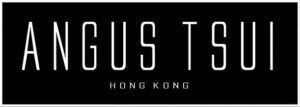
Interview with Angus Tsui
by Novetex
What inspired you to use sustainable or recycled material? Can you share with us what experience you have gained from joining the fashion HK runway show? Any special learning or insights from your clients regarding the usage and outcome of recycled/ upcycled material?
Many of the participants at the Redress design competition were students and yarn designers. Those who were better able to source materials had a better chance of winning, so many of them used excess fabric stock and textile waste to create their products. Back in 2012, the idea of using sustainable or recycled material was still relatively new, but we decided to take part in the competition as it gave us an opportunity to be creative and work with other parties to produce something that was sustainable but also desirable.
There are many fashion collections out there that are environmentally conscious but unable to sell, which means they ultimately become waste once again. This is why we tried very hard to create a collection that not only used sustainable materials, but also considered the wearers’ needs in terms of design. In the past, most eco-friendly garments were made with textile waste, but at some point, more and more factories began adopting a circular system to transform waste into various types of recycled fibers. As a designer, are there other ways to be sustainable? For us, we tried to think out of the box by releasing trans-seasonal collections, interchangeable designs, and customizable details, in an effort to extend the life cycle of garments and change people’s perspective on only wearing on-trend or seasonal items.
This season, in addition to our knitwear collection, which is produced using your upcycled yarns, we have also designed other pieces using better quality materials. This is because lower quality textiles are generally less durable and may deteriorate after a few washes, while materials such as polyester release microfibers during the washing process, which pollutes the water. By using better quality textiles, we are hoping to raise awareness amongst consumers that this is another way to care for the environment.
We feel that most consumers do not associate their fashion choices with environmental protection, and so we have launched a project called “ANcares.” In collaboration with Cooperate, we aim to educate the public on minimizing textile waste (such as waste from old uniforms) through exhibitions and partnerships with shopping malls and hotels. By making the whole concept of sustainable fashion more accessible, our hope is that consumers will feel more connected to the idea of adopting sustainable fashion choices.
What’s the most challenging thing about running a sustainable fashion show? Is there any difference from working on a regular fashion show?
Sustainable fashion requires a lot of thought and effort in terms of choosing what materials to use and conducting washing and fabric tests to ensure we meet environmental standards. Clothing that is sustainably produced may also cost more due to the additional time, labor, and creativity needed in the development and production process. With regards to running a sustainable fashion show versus a regular one, one of the biggest challenges is ensuring our presentation and styling are eye-catching enough to prompt viewers to look deeper into our story, our materials, and our recycling process.
Do you see sustainability ever truly affecting the fashion industry? How do you think sustainability will affect your future creations?
I feel it will be difficult to achieve 100% sustainability, as natural fibers and synthetic fibers serve different purposes. Some natural fibers are unable to replace certain features of synthetics, so it really comes down to adjusting the proportions and ensuring good recycling policies. Consumers also need to learn that beyond recycling, taking better care of their garments and extending their life cycle can also help to protect the environment. In fact, if we only used natural fibers, we may not be able to produce exactly what we are looking for, so I think it’s more important to focus on how we utilize our materials. With continued advancements in technology, I believe we will eventually come up with a solution to microfibers, so I think we need to figure out how both types of material can coexist, instead of deciding how to eliminate one or the other.
After this collaboration with the Billie / Novetex using our upcycled yarns, could you give us some of your comments on the quality, usage of the yarns and outcome of your final styles? Would you consider increasing the percentage of using upcycled yarns/ material after this collaboration? Any plans to work with Billieupcycling™ yarns in your future collection?
First, I did not expect the design process to move so quickly. Generally, during the garment design process, we need to produce sketches and patterns, and test out the proportions and visual effect of our patchwork designs numerous times. But the development process for knitwear moves quite quickly and we were able to get through the design stage very efficiently. In terms of design, we discovered that elements such as patchwork or pleats, when applied to knitwear, are lower in cost, easier to construct, and more comfortable and wearable than when they are applied to other textiles. Based on feedback we received on our social media platforms, our customers felt that the knitwear pieces were very eye-catching and proved to be as popular as our showcase items. We believe that knitwear is definitely something we can further explore in the future.
Our customers liked how wearable the pieces were, and the fact that the designs did not seem overly dressy or ostentatious. We hope to collaborate with The Billie again and will tell our friends about it!
website: www.angustsui.com

